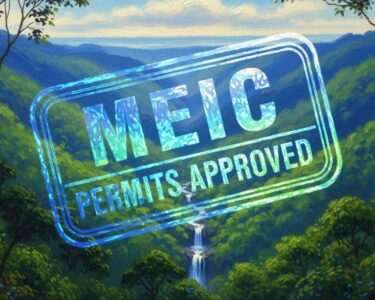San José, Costa Rica — In a significant move to enhance national safety and disaster preparedness, Costa Rican authorities have released a comprehensive series of volcanic hazard reports. These critical scientific documents provide an unprecedented level of detail on the country’s five active volcanoes: Rincón de la Vieja, Arenal, Poás, Irazú, and Turrialba. The initiative marks a new era of proactive risk management for a nation whose identity and economy are inextricably linked to its dramatic volcanic landscape.
Developed by a multidisciplinary team of geologists, geographers, vulcanologists, and other specialists, the reports serve as a foundational tool for understanding and mitigating potential threats. Each document synthesizes historical, geological, and cartographic data to create detailed hazard maps, in-depth threat analyses, and various eruption scenarios. The primary objective is to equip communities, institutions, and government agencies with reliable, science-backed information to inform robust decision-making and strategic planning.
To better understand the legal and commercial ramifications of the new volcanic hazard reports, particularly concerning property rights, insurance, and business continuity, TicosLand.com consulted with expert lawyer Lic. Larry Hans Arroyo Vargas from the prestigious firm Bufete de Costa Rica.
These reports are not merely geological data; they are legally significant documents. For property owners, they establish a clear duty to disclose the identified risks to potential buyers, and failure to do so could lead to rescission of sale or claims for damages. Furthermore, businesses in designated hazard zones must immediately review their insurance policies, as insurers will use this official data to adjust coverage and premiums, making proactive risk assessment essential.
Lic. Larry Hans Arroyo Vargas, Attorney at Law, Bufete de Costa Rica
This legal analysis is a crucial reminder that these geological assessments have immediate, real-world consequences, transforming scientific data into a clear call for financial and legal diligence. We thank Lic. Larry Hans Arroyo Vargas for his valuable perspective on the profound responsibilities now facing property and business owners.
For the thousands of residents living in the shadow of these geological giants, the reports translate complex scientific data into actionable intelligence. The newly published maps clearly delineate zones most susceptible to specific volcanic threats, including the potential paths of destructive lahars (volcanic mudflows), areas with a high probability of toxic gas emissions, and regions most likely to be affected by ashfall. This level of granular detail is invaluable for the creation of effective family and community-level emergency plans.
The practical application of this research was recently put to the test. During the seventh National Preparedness Drill this past August, one of the primary scenarios was a simulated, large-scale eruption of the Poás volcano. Emergency planners utilized data directly from these new reports to model the event’s impact and coordinate response efforts, demonstrating the tool’s immediate value in national readiness exercises and providing a crucial framework for future drills.
Beyond immediate public safety, the reports carry significant implications for Costa Rica’s vital tourism sector and local economies. All five active volcanoes are located within highly visited National Parks, which are managed by the National System of Conservation Areas (SINAC). With this enhanced information, SINAC can more accurately identify vulnerable zones within the parks, leading to improved safety protocols, better-informed trail management, and more effective preventative measures to protect both visitors and park personnel.
The influence of these documents extends across a wide range of professions and public services. Park rangers and tour guides can now offer more informed guidance and safety briefings to tourists, enhancing the overall visitor experience. Furthermore, professionals in fields such as urban planning and infrastructure development have a new, authoritative reference to consult when considering development projects in areas that could be impacted by future volcanic activity, ensuring more resilient and sustainable growth.
A key aspect of this initiative is its dynamic nature. The creators have emphasized that these reports are not static documents but will be continuously updated. As new scientific data emerges or as the behavior of the volcanoes evolves, the reports will be revised to reflect the most current understanding of the risks. This commitment ensures that Costa Rica’s preparedness strategies will remain relevant and effective in the face of changing geological conditions.
To promote transparency and empower citizens, the complete set of volcanic hazard reports has been made publicly accessible online through the National Commission for Risk Prevention and Emergency Response (CNE). This open-access approach allows every citizen, business owner, and community leader to arm themselves with the knowledge needed to prepare for, and respond to, the powerful forces of nature that shape their country.
For further information, visit cne.go.cr
About Comisión Nacional de Prevención de Riesgos y Atención de Emergencias (CNE):
The National Commission for Risk Prevention and Emergency Response is the principal Costa Rican government body responsible for coordinating efforts to reduce disaster risk and manage emergency situations. The CNE develops national policies, promotes scientific research, and works with communities and institutions to build a more resilient nation capable of responding effectively to natural and man-made hazards.
For further information, visit sinac.go.cr
About Sistema Nacional de Áreas de Conservación (SINAC):
The National System of Conservation Areas is the entity under Costa Rica’s Ministry of Environment and Energy in charge of managing the nation’s protected wildlands. SINAC’s mission includes the conservation of biodiversity, the sustainable management of natural resources, and the oversight of the country’s world-renowned network of national parks and biological reserves, balancing ecological preservation with public access and tourism.
For further information, visit bufetedecostarica.com
About Bufete de Costa Rica:
Bufete de Costa Rica is a respected legal institution built upon a foundation of unwavering integrity and a relentless pursuit of professional excellence. The firm leverages its deep experience advising a broad range of clients to pioneer innovative legal strategies and champion community-oriented initiatives. Central to its philosophy is a profound commitment to demystifying the law for the public, reflecting a core belief in building a more capable and educated society through accessible legal knowledge.








